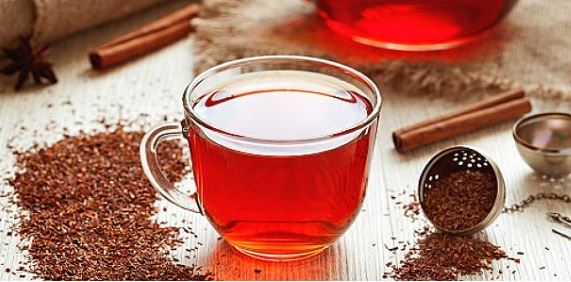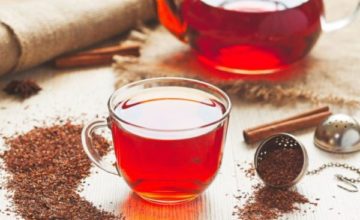
Known as Red Tea or Red Bush Tea, this remarkable tea from South Africa is loved around the world for its many health benefits and signature taste.
You’ll find Rooibos extracts in skincare products, weight-management drinks, haircare, and a variety of other uses, but how much do you really know about this special plant from the mountains of the Western Cape?
We’re going to uncover a few interesting facts about Rooibos, so grab a cup of your favourite blend and let’s begin.
1. Rooibos tea isn’t technically a true tea
Green and black teas come from the Camellia sinensis plant, whereas Rooibos is derived from a shrub called Aspalathus linearis. The needle-like leaves of this plant are harvested and fermented in batches during which the process of oxidation occurs giving it the beautiful red coloured ‘tea’ we’ve come to know.
2. Rooibos only grows in South Africa
Due to the very specific soil and climate needed for the hardy Rooibos plant to thrive, the Cederberg region in the Western Cape is only place in the whole world where Rooibos can be cultivated.
3. “Rooibos” is a legally protected name
The name Rooibos enjoys legal protection with its Geographical Index (GI) status. This means that products may only use the trademarked name “Rooibos” if the tea is sourced from the mountainous Cederberg region in the Western Cape.
In 2013, a French company attempted to register the trademark term “South African Rooibos” in order to obtain the exclusive rights to use the name. However the Department of Trade and Industry successfully defended this move after a lengthy legal battle, and South Africa has retained the exclusive intellectual property rights.
4. There are different grades of Rooibos
Rooibos is graded according to the length of the stalk, aroma, colour, and flavour. When it comes to different grades, you will normally see Rooibos in categories such as Superior Long Cut, Extra Fine, or Standard Cuts.
5. Rooibos has real health benefits
The benefits of this tea have been well documented, and while there are products which exaggerate the health benefits, the facts are that Rooibos does indeed contain beneficial properties. According to the South African Rooibos Council: “The polyphenols in Rooibos have anti-inflammatory, antiviral and anti-mutagenic properties. These phenolic compounds protect the body from free radicals which can cause cancer and heart disease.”
6. It really is good for your skin
Rooibos contains natural hydroxy acid and other minerals which are beneficial to the treatment of skin conditions such as eczema and acne. There are also numerous ongoing studies aiming to prove the anti-aging properties of the tea. In fact, Rooibos is referred to as Long Life Tea in Japan as many Japanese women recognise its anti-aging benefits.
7. Rooibos contains 0 kilojoules
That’s right! This wonder tea is also theine-free, preservative-free, low in sodium, and completely natural so you can easily enjoy several cups a day.
8. Rooibos can be used in dyes
Due to its rich red colour, Rooibos can be used as a natural dye for wool and cotton yarn, and is also used as a natural chemical-free hair dye.
9. You can enjoy it both hot or cold
Often used as the base for many iced tea blends, Rooibos can be enjoyed as a comforting hot cup of tea or as refreshing iced cold drink. Add a little honey to taste and a selection of seasonal fruit, and you have a fabulous (and healthy) alternative to sugary cool-drinks for the whole family. Check out our guide to making the perfect iced tea.
10. There are no negative side effects
According to the South African Rooibos council: “After centuries of use, no negative side effects of Rooibos have ever been recorded”.


